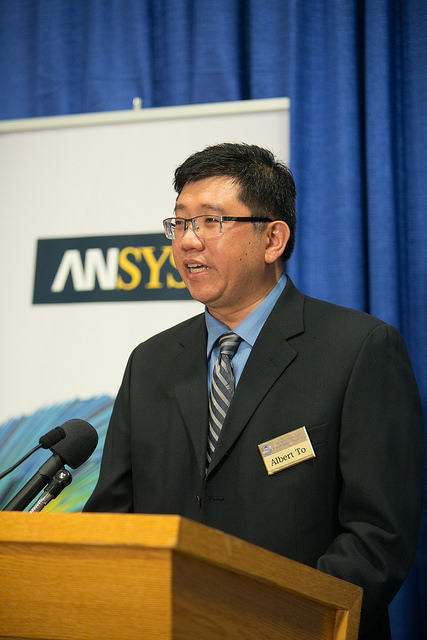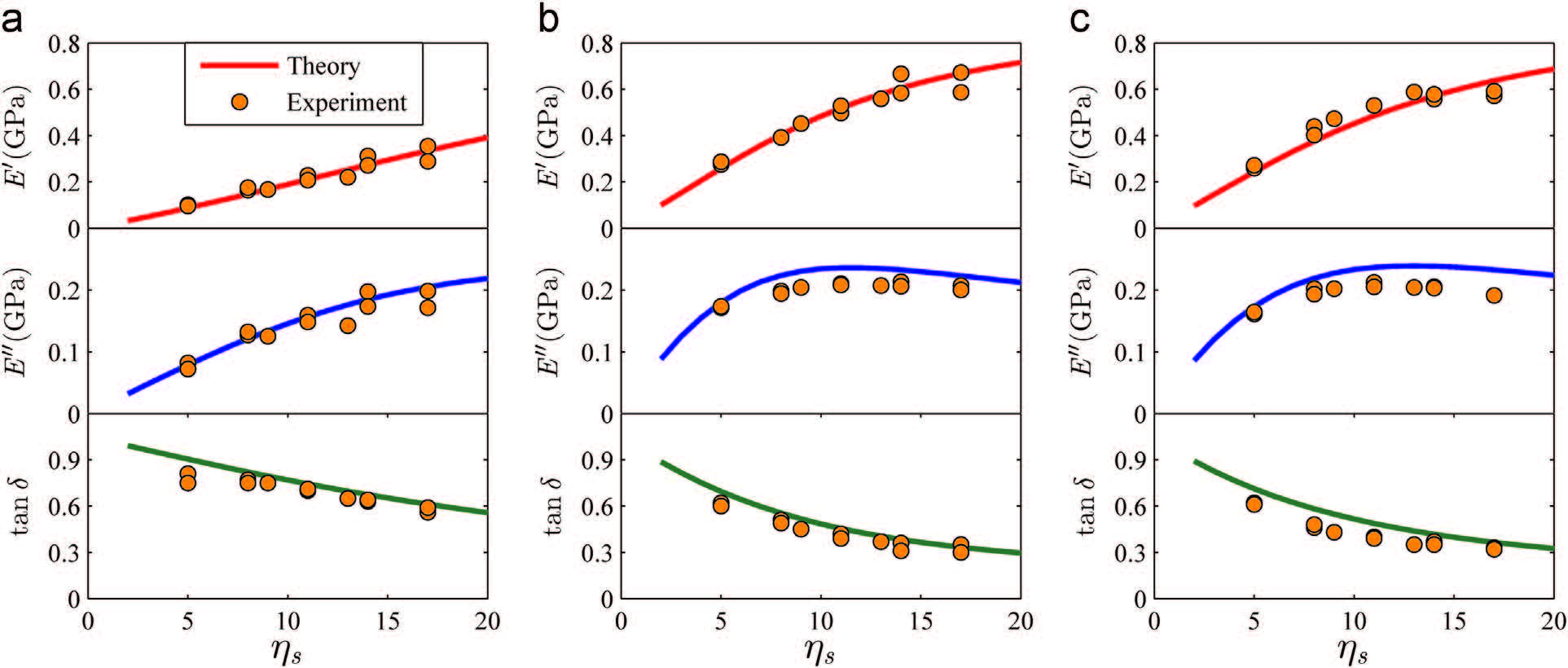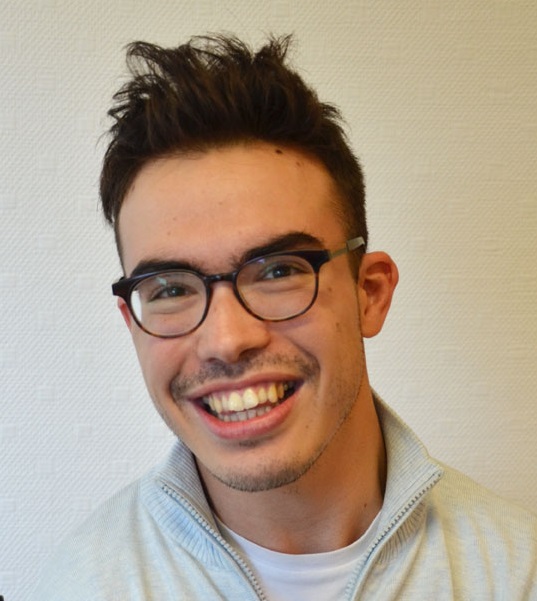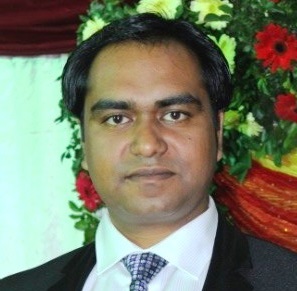University of Pittsburgh | Computational Mechanics Group
Albert C. To, Ph.D.
William Kepler Whiteford Professor
Director, ANSYS Additive Manufacturing Research Laboratory
Director, MOST-AM Consortium

Department of Mechanical Engineering & Materials Science, University of Pittsburgh, 508 Benedum Hall, 3700 O’Hara Street, Pittsburgh, PA 15261
Tel: (412) 624-2052 | Email: albertto [at] pitt [dot] edu
My primary research interests are in design optimization for additive manufacturing, multiscale methods, and computational mechanics. Currently, my research group is actively working on fast process modeling and topology optimization for metal additive manufacturing.
I joined University of Pittsburgh in 2008 as assistant professor and was promoted to associate professor in 2014 and to full professor in 2019. I am also directing the ANSYS Additive Manufacturing Research Laboratory at Pitt, which houses several of the most advanced metal 3D printers including the EOS DMLS, Optomec LENS, and ExOne binder jetting.
I did my undergraduate study at UC Berkeley and master's study at MIT. I obtained my Ph.D. from UC Berkeley under the supervision of Shaofan Li and Steve Glaser. I also conducted postdoctoral research with Wing Kam Liu at Northwestern University.
My research has been supported by NASA, DOD, DOE, NSF, America Makes, ANSYS, etc. I am collaborating with the industry extensively in my computational research for additive manufacturing through the MOST-AM Consortium, which I founded in 2016 and now has 30+ member companies and research labs.
I received the NSF BRIGE award in 2009, the Board of Visitors Faculty Award from my engineering school in 2016, and the Carnegie Science Award in 2018.
I am currently looking for Ph.D. student interested in constitutive modeling or topology optimization for additive manufacturing. Send me a copy of your resume if you are interested.
NEWS
8/11/2019 - Our research group (I, Wen Dong, Hai Tran, Santanu Paul, and Shawn Hinnebusch) gave presentations at SFF meeting in Austin, TX.
7/28/2019 - Our research group (I, Lin Cheng, Qian Chen, Hao Deng, and Florian Dugast) gave presentations at USNCCM in Austin, TX.
5/1/2019 - The Bi-Annual MOST-AM Consortium meeting was successfully held with 69 attendees.
3/12/2019 - Our research group (I, Hao Deng, and Shawn Hinnebusch) gave presentations at the Topology Optimization Roundtable in Albuquerque, NM.
1/31/2019 - I gave an invited Department seminar on our topology optimization for AM work at Drexel University thru Prof. Ahmad Najafi's invitation.
1/29/2019 - I gave an invited talk on how to reduce residual stress in AM components at the 2019 Air Force Additive Manufacturing Academic Symposium for Additive Manufacturing in Dayton, Ohio.
1/7/2019 - We welcome Dr. Hai Tran and Dr. Florian Dugast to our research group!
12/15/2018 - The Bi-Annual MOST-AM Consortium meeting was held succesfully with 71 attendees from over 25 different organizations.
11/14/2018 - I gave an invited presentation at a NASA workshop on rapid manufacturing in DC.
11/13/2018 - I gave a keynote talk on deformation and failure of AM parts at ASME IMECE in Pittsburgh.
11/6/2018 - I visited Colorado School of Mines and gave a seminar there.
10/30/2018 - We bid farewell to Dr. Jikai Liu as he joins Shandong university to become a professor there.
10/15/2018 - We welcome Dr. Santanu Paul from IIT Mumbai to our group!
10/12/2018 - I visited UT Arlington and gave a Department seminar there.
8/13/2018 - I gave five presentations at the Solid Freeform Fabrication meeting in Austin, Texas
7/22/2018 - I taught a short course on DfAM and topology optimization at WCCM, and 5 group members also presented their recent work at the conference.
7/12/2018 - I received a $1M grant from DOE NEUP program to improve AM technology for fabricating complex nuclear components. [press release]
5/15/2018 - The Bi-Annual MOST-AM Consortium meeting was successfully held with 51 attendees.
3/19/2018 - I received the 2018 Carnegie Science Award in the Advanced Manufacturing and Materials category. [press release]
3/15/2018 - I presented my group's research and toured the AM facilities at NASA JPL.
12/15/2017 - The Bi-Annual MOST-AM Consortium meeting was successfully held with 55 attendees.
12/13/2017 - My senior design team won 1st place among 26 teams in the Department for their design of a de-powdering machine for AM builds.
11/16/2017 - I gave two presentations on grain growth modeling and topology optimization for AM at NASA Langley Center.
11/1/2017 - I served as an AM expert panelist at the DOE - University Turbine Systems Research (UTSR) Workshop.
10/11/2017 - I presented our work on modeling history derivative topology optimization at the Sim-AM conference in Munich, Germany.
8/18/2017 - I presented our work on process-microstructure-property relationship of AM metals at the NSF AM workshop we hosted at Pitt.
8/7/2017 - Our group (Jian Liu, Lin Cheng, Xuan Liang, and Qian Cheng) presented at the SFF meeting in Austin, Texas.
7/19/2017 - Our group (Jikai Liu, Lin Cheng, and I) presented at USNCCM in Montreal, Canada.
5/10/2017 - Lin Cheng won 1st place in student poster session at the RAPID meeting. Congratulations, Lin!
5/9/2017 - My former PhD student Pu Zhang has accepted an offer to join SUNY-Binghamton as Assistant Professor. Congratulations, Pu!
5/8/2017 - The MOST-AM Consortium is officially launched! The kickoff meeting was attended by 25 organizations
12/2/2016 - I received a NASA grant entitled "Prediction of Microstructure Evolution in DMLM Processed Inconel 718 with Part Scale Simulation".
11/30/2015 - I am now on the Editorial Board of the Additive Manufacturing journal.
10/28/2016 - I received the 2016-17 Board of Visitors Faculty Award for the single faculty who have had the most accomplished previous year in the engineering school at Pitt.
10/1/2016 - Dr. Jikai Liu from University of Alberta has joined our group as a postdoc fellow. Welcome, Jikai!
9/1/2016 - I gave two keynote talks at the International Symposium on Additive Manufacturing Taiwan 2016.
8/15/2016 - I received an NSF award entitled "Novel Computational Approaches to Address Key Design Optimization Issues for Metal Additive Manufacturing" [press release]
8/11/2016 - Oberg Industries signed agreement with Pitt to manage our AM lab [press release].
8/10/2016 - Our group (Lin Cheng, Jian Liu, and I) presented at the Solid Freeform Fabrication Meeting in Austin, Texas.
7/29/2016 - Qingcheng Yang just submitted his Ph.D. dissertation. Congratulations, Dr. Yang!
7/25/2016 - Lin Cheng's paper on cellular structure optimization has been accepted for publication by Rapid Prototyping Journal.
6/15/2016 - ANSYS Additive Manufacturing Research Laboratory officially opens for business! ANSYS CEO Jim Cashman, America Makes Director Ed Morris, and many industry leaders join us to celebrate the dedication ceremony [press release].





















